Big Pharma must soon confront an industry-wide hazard that reaches magnitudes far greater than the typical concerns of corporate profit margins and business politics. Through years of industry consolidation, it has essentially made itself “too big to fail.” Only now, the model which it once could never fail within — that is, the practice of obtaining patent exclusivity over drugs that are approved through clinical trials and regulations — has become obsolete, even impossible, under the current conditions of the industry.
In this new climate, the trials and regulations Big Pharma once successfully navigated may very well lead to its total demise. However, the pharmaceutical sector has set its eyes on the only solution that can keep its money and power intact; the full takeover of the public sector, specifically the World Health Organization (WHO), and the regulatory system that now holds the entire market hostage.
The problem begins with the looming financial threat that the top 20 Big Pharma companies face: from now until 2030, $180 billion in sales will be at risk. This threat, called a patent cliff, is a regularly occurring problem for the pharmaceutical industry. Big Pharma has long made its money by attaining patent exclusivity of certain drugs, thereby monopolizing all potential profits made off of them for a finite amount of time. When that patent exclusivity ends, the drug rolls head first off of a “patent cliff,” and tens of billions of dollars in revenue are put at risk.
Typically, companies address patent cliffs through mergers and acquisitions (M&A) of other, often smaller drug companies that produce products with market potential. This time around, however, according to Biopharma Dive, “after years of industry consolidation, there are not many major large drugmakers left as attractive merger targets.” In other words, Big Pharma has become “too big to fail” and – over the next 6 years – faces a new round of potentially disastrous patent cliffs. Further, traditional chemical drugs already exist for many diseases and regulators have increased approval standards for them, delaying the time in which new products obtained from M&As can be taken to market.
As a result, companies facing patent cliffs have shifted their patent cliff response efforts to acquiring biotech and biologic companies that produce products that, compared to their more typical chemical-based counterparts, are more complex, unpredictable and difficult and expensive to make. The race for future blockbuster drugs will therefore take place “in big drugmakers’ own laboratories or in those of smaller biotechnology companies” as opposed to mergers with other large corporations.

To understand what makes biologics so complex and unpredictable, their vast difference in function and origin compared to chemical-based drugs must be understood. Biologics are taken from different natural sources, such as humans, animals or microorganisms and “may be produced by biotechnology…and other cutting-edge technologies.” While chemical drugs activate one’s entire immune system in a general manner, biologics target “certain proteins or cells in your immune system to create specific responses,” hence the use of cutting-edge technology to achieve these more specific medical goals.
There are multiple reasons Pharma companies might be interested in biotech — but three are clear from a market perspective. The complex nature of biologics makes them impossible to replicate in the way a typical chemical-based drug would be, forcing companies to make “biosimilar” versions of the drugs as opposed to generics. This means that biosimilar versions of biologics cannot be interchanged without consequence during a patient’s treatment in the way a generic could be, for example. Their costly development also makes their off-label counterparts more difficult to sell at significant discounts, making biosimilars not as financially appealing to consumers as generic drugs. There are also complex regulatory obstacles in getting biosimilars to market, even after they’re approved by the Food and Drug Administration (FDA). These attractive characteristics have made biotech the hopeful solution of the coming patent cliff Big Pharma companies are preparing to face, with a slew of top Pharma corporations acquiring gene editing, antibody-drug conjugate and other biotech companies to offset their potential losses (see here, here, here, here, here and here).
On face value, this investment in biologics appears like a typical patent cliff response; purchasing new companies that produce drugs with “blockbuster” potential, and hoping they will alleviate the incoming losses. However, there are significant obstacles biotech/biologics face from a market perspective that make Pharma’s investment in them a significant shift in the industry – the unpredictability of biologics has proven to make them consistently unsafe.
The mRNA COVID-19 vaccines, which were biologic drugs, were associated with an excess risk of serious adverse effects, and can cause fatal myocarditis. CRISPR, the most popular gene editing biotechnology, often silences and activates genes it isn’t meant to, leading to adverse effects such as cancer (also see here).Antibody-drug conjugates induce serious adverse events 46.1% of the time according to a study by Zhu et al. and are significantly associated with sepsis in cancer patients, which increases mortality.
Thus, these unattractive characteristics make it more difficult for biologics/biotech to be successful within the conventional regulatory framework under which most medicine development currently operates. Yet, persuading consumers that an unpredictable, highly technical drug is safe and effective may also prove difficult. Luckily for Big Pharma, the World Health Organization and its massively endowed public-private partners are pursuing an unprecedented legal process that would cement loopholes that could solve these significant market challenges of at least some biotechnologies, and which already proved to make Big Pharma record profits during the COVID-19 pandemic, when normal regulatory hurdles were removed.
The mRNA COVID-19 vaccines quickly became Big Pharma’s highest selling annual market success ever. As a result of the COVID-19 vaccines, Pfizer made $35 billion, while competitors BioNTech and Moderna raked in $20 billion each in 2021 and 2022. Bill Gates turned his $55 million investment in BioNTech into $550 million. 70% of the US population is now fully vaccinated, as well as 70% of the world population. This could not have been achieved without the fast-tracked, deregulated development and mandated consumption of the experimental drugs — a plan that was, regarding fast-tracked development (not mandates), outlined in the Pentagon–run Operation Warp Speed and legally authorized by the FDA’s emergency use authorization and the WHO’s Emergency Use Listing.

These “emergency use” labels allowed Pharma companies to override the standards regularly associated with the tenuous process of getting a drug passed through lengthy clinical trials, which previously almost caused biotech company Moderna to collapse before the pandemic—a story that perfectly demonstrates the urgent need for biotech companies to eliminate the regulatory standards typically required for medical products, and the precedent the public sector established in providing a path for this regulatory obfuscation.
Founded roughly ten years before the pandemic, Moderna, which was highly valued for many years based on its promise to produce products for rare diseases that required multiple doses throughout a patient’s life, had failed to deliver any products at all by early 2020. In addition, it had not even been able to prove in clinical trials that it could produce safe and effective mRNA products.
Their allegedly revolutionary drug technologies were consistently plagued by toxicity issues when dosed to “effective” amounts, and were ineffective when dosed to “safe” amounts. The safety problems were so bad that Moderna was forced to abandon its key mRNA-based biologic treatment that it had used to raise most of its capital and which justified the company’s high valuation after whistleblowers shed light on the fact that it couldn’t even make it to human trials.
These safety issues, among other damning political ones, set up Moderna for an imminent collapse right up to before the pandemic, with funding drying up and the company being instructed to “stretch every dollar” and reduce expenses, as well as a declining stock price that was paired with key executives leaving the company at critical junctures in the lead-up to 2020.
But when news of a virus out of Wuhan emerged in late 2019, while many worried of a coming pandemic, Moderna’s CEO, Stéphane Bancel, had a golden opportunity placed in his failing company’s lap. At the time, the deputy director of the Vaccine Research Center at the National Institutes of Health, Barney Graham, was already preparing the NIH to develop vaccine candidates for the coming virus.
Much to Moderna’s relief, the company had already been working on “bring[ing] a whole new class of vaccines to market’ with Graham in the years prior to the pandemic. This relationship, among other events described in Unlimited Hangout’s exposé on Moderna, eventually led Graham to propose to the Moderna CEO the opportunity to use the coming pandemic virus “to test the company’s accelerated vaccine-making capabilities,” before any experts had officially declared that a vaccine was the solution to the pandemic.

This agreement, which would manifest in the coming months, put Moderna on the frontlines of the US government’s accelerated vaccine program, “Operation Warp Speed,” and rewarded Moderna with its first and only product; the COVID-19 mRNA vaccines, which generated billions in profit. Notably, the previously failing and stagnant company was only able to launch this product due to the “emergency” removal of the same regulatory hurdles that had previously prevented Moderna from taking any of its drug candidates to market.
Thus, the COVID-19 vaccines went to market in just 326 days, a fraction of the 10-15 years it typically takes vaccines to go to market. This timing was critical to the Operation Warp Speed goal of vaccinating the entire American population — releasing the vaccine in the heat of the pandemic, before lockdowns and social restrictions had ended, likely made people more concerned with ending the pandemic than the regulatory criterion of the drug. As a result, whether state-mandated in countries like Austria or job-dependent in the U.S., many people accepted vaccine mandates without question for a drug that was rushed to market.
The rapid development and mandated consumption of experimental drugs, a strategy which was first adopted by the military to respond to bioweapons attacks, has now been internationally legitimized by the WHO, as it recently approved critical revisions to the International Health Regulations and continues to draft its recently shelved WHO CA+ treaty.
While the WHO has claimed that these conventions are being drafted to prepare the global population for a future with an ever-increasing incidence of deadly pandemics (the next of which they refer to as “Disease X”), the core policies of these documents — driven by the ideology of the Global Health Security doctrine and the “One Health” agenda — would further codify surveillance-heavy and emergency deregulatory measures that would create a massively profitable and permanent market for certain products in Big Pharma’s new biotech arsenal.
Like it was during Operation Warp Speed, the US remains on the frontline of the effort to accelerate the process of getting biologic drugs to market under the guise of pandemic preparedness. Just this week (July 2024), the United States Department of Health and Human Services’s (HHS) Biomedical Advanced Research and Development Authority (BARDA), which aims to “respond to 21st century health security threats,” granted $176 million to Moderna to “accelerate development of a pandemic influenza vaccine that could be used to treat bird flu in people, as concern grows about cases in dairy cows across the country” (emphasis added).
This is likely the first government contract awarded to a biotech company since the COVID-19 pandemic with the specific intention of “accelerating” vaccine development against an allegedly impending pandemic virus (other biotech companies have been awarded contracts for pandemic preparedness, however). The tactic of preemptive development of pandemic drugs, and their accelerated path to market, is a key component of the new WHO conventions and an essential factor in the viability of the biotech pandemic market—and may now provide Moderna with its second product ever.

The biotech pandemic market, as described above, will not be one that depends on the free will of consumers to opt in and out of products — but instead relies on tactics of forced consumption and manipulation of regulatory paradigms. At the forefront of this push are the WHO’s public-private-partners / private stakeholders, who directly shape and benefit from this policy. Their influence has, in effect, turned the WHO into an arm of Big Pharma, one so powerful that it already demonstrated its ability to morph the entire international regulatory process for the benefit of the pharmaceutical industry during the COVID-19 pandemic. These new laws will solidify that influence further, and legally bond the entire global community to the permanent pandemic market being built on Big Pharma’s behalf.
Who funds the WHO?
The WHO is funded through regular contributions from member states — which make up 20% of its funding — and private stakeholders — which make up the other 80% and thus the bulk of its finances. The organization’s overwhelming reliance on private funding has made it vulnerable to vast influence from its stakeholders, providing an avenue for private actors to dictate WHO policy, sit on crucial committees, run entire distribution programs and even occupy top bureaucratic positions.
The private sector influence on the WHO materialized most tangibly and consequentially during the COVID-19 pandemic, when the pre-pandemic goals of WHO public-private partners like the Gates-funded Coalition for Epidemic Preparedness Innovations (CEPI) to “speed the development of vaccines” and Bill Gates (who advocated developing vaccines in 90 days or less) heavily influenced global pandemic response for WHO member states.

Similarly, public sector bureaucrats such as Dr. Anthony Fauci, Obama’s former FDA commissioner Margaret Hamburg, and Rick Bright of BARDA and the Rockefeller Foundation, all advocated in an Oct. 2019 panel for the creation of a new system that emphasized “speed and effectiveness” and “fast” vaccines. Fauci declared the importance of changing people’s perception of influenza as a mild disease and doing so in “a disruptive [and iterative] way” and, as Whitney Webb noted in her exposé on Moderna, “[Bright]said the best way to ‘disrupt’ the vaccine field in favor of ‘faster’ vaccines would be the emergence of ‘an entity of excitement out there that’s completely disruptive, that’s not beholden to bureaucratic strings and processes.’ He later very directly said that by ‘faster’ vaccines he meant mRNA vaccines.”
Notably, whether or not member states had in place US/UK-like emergency use authorization laws, which allow for the fast-tracked development and distribution of experimental, unapproved drugs in the face of emergencies like pandemics, member countries universally adopted them to develop and/or distribute the COVID-19 vaccines—a quite “disruptive” and “fast” way of getting these vaccines to market, done exactly by not making their development “not beholden to bureaucratic strings and processes.”
Before this emergency deregulation was adopted, the WHO had to grant this unprecedented effort, and the unapproved vaccines, legitimacy through its Emergency Use Listing procedure (EUL), which it uses to “assess and list” unapproved drugs “with the ultimate aim of expediting the availability of these products to people affected by a public health emergency.”
While the EUL is officially an advisory label meant to help member states make their own decisions, in reality it has de facto legal consequences that significantly influence the global economy—mainly through the role EUL plays in the WHO’s global vaccine distribution program, COVAX. According to the WHO’s website, COVAX’s, “EUL / prequalification programmes ensured harmonized review and authorization across member states,” highlighting the legal and regulatory influence of the WHO’s EUL.
While COVAX operates as a crucial delivery system for WHO-approved medical products during pandemics, it also serves as perhaps the clearest example of the scale and inner-workings of financial corruption in the WHO. COVAX, like many WHO operations, is a public-private-partnership, or a long-term collaboration between the WHO and private companies.
Bill Gates — who described his $10 billion investment in vaccines which yielded a $200 billion return as his “best investment” — is deeply financially entangled in the WHO’s COVAX. COVAX’s stated goal during the COVID-19 pandemic was to “accelerate the development, production, and equitable access to COVID-19 tests, treatments, and vaccines.” It was co-led by the Bill Gates-founded Gavi, the WHO, CEPI and the Gates-funded UNICEF. Gavi, CEPI, the Gates Foundation and UNICEF have all pushed for accelerated vaccine development before the pandemic. Notably, Gavi’s stated goal is to create “healthy markets” for vaccines by “encourag[ing] manufacturers to lower vaccine prices for the poorest countries in return for long-term, high-volume and predictable demand for those countries” (emphasis added).
COVAX also developed a “No-Fault Compensation Program” that worked to “[reduce] the risk of litigation for [vaccine] manufacturers” by “indemnify[ing] manufacturers against any financial losses they may incur from the deployment and use of these vaccines.” In other words, the WHO worked to exonerate Big Pharma companies of legal and financial liability from adverse events produced by its rapidly approved COVID vaccines. Thus, Big Pharma, with the WHO’s assistance, was not only able to rush troubled products to market, but with complete impunity for any harm those products may cause.
Further, the founder of CEPI and former director of the Wellcome Trust (both of which are large funders of the WHO), Jeremy Farrar, was made Chief Scientist of the WHO in December 2022—further entrenching the goals of Gates and CEPI into the WHO’s policy agenda.
Even thirteen of the fifteen members on the WHO’s Strategic Advisory Group of Experts on Immunization (SAGE) either hail directly from careers at companies that are private stakeholders of the WHO, most often the Wellcome Trust or NGOs and institutions funded by Bill Gates or the Gates Foundation.
The ongoing amendments to the IHR and drafting of the WHO CA+ treaty reflect the latest effort of the WHO’s public-private-partners to solidify their global influence by using the United Nations (UN) organization as a proxy, codifying their policy agenda under the auspices of the most recognized international health organization in the world. While the conventions purport to further the alleged international interest of pandemic preparedness, the measures they call for — which already proved to make Big Pharma record profits during the COVID-19 pandemic despite no real public health benefit — would enshrine the disasters of COVID-era vaccine policy (rushed, under-tested Pharma products imposed on the public through mandates) as the default response to public health concerns, whether deemed more dangerous or minor in comparison to COVID-19.
Solidifying COVID-19 Measures, Paving the Way for the Pandemic Market
The central policy measures of the IHR amendments and the WHO CA+ treaty would create a permanent financial market centered around pandemic preparedness and response. The core ideology that runs through both of these conventions is the “One Health” agenda.

According to the WHO’s website, a “One Health” approach to pandemic preparedness and response plans to “[link] humans, animals and the environment” in order to “address the full spectrum of disease control – from prevention to detection, preparedness, response and management – and contribute to global health security.” In other words, it requires full-scale surveillance of the human-animal environment, both before pandemics for purposes of prevention and preparedness, and during pandemics for the purpose of response. Also vital to the One Health model is the interoperability and accessibility of data (gathered through surveillance) — or as the WHO puts it, “shared and effective governance, communication, collaboration and coordination.”
From a business perspective, the One Health agenda would create a cyclical market built on two dominant principles: constant surveillance of pathogens with “pandemic potential,” and R&D on medical countermeasures to these pathogens. This R&D then comes to market through the implementation of regulatory policies for the development and distribution of unapproved, experimental medical products. The recently approved IHR amendments have already cemented these principles into international law. The continued drafting of the WHO CA+ seeks to as well.
I. Biosurveillance on Pathogens w/ Pandemic Potential
Both conventions specifically call for member states to be legally required to build infrastructure to conduct biosurveillance on entire populations. For example, the WHO CA+ requires member states to “commit to promote a One Health approach for pandemic prevention, preparedness and response that is…integrated, coordinated and collaborative among relevant actors and sectors,” and to strengthen pandemic prevention through “collaborative surveillance” and “vector-borne disease surveillance and prevention,” among other similar provisions.
Similarly, a new addition to Annex 1 of the IHR calls on states to “develop, strengthen and maintain the core capacities to coordinate with and support the local level in preparing for and responding to public health risks…including in relation to: surveillance…implementation of control measures…[and] addressing misinformation and disinformation; and logistics.” This arguably reiterates a provision already established in the previously approved 2005 IHR, which says that member states must “develop, strengthen and maintain…the capacity to detect, assess, notify and report events in accordance with these Regulations.” Notably, however, the new IHR links surveillance to several other “core capacities”—including “implementation of control measures” and “addressing [mis/disinformation].”
While the approved IHR does not directly mention surveillance at the human-animal interface, the WHO remains committed to its One Health Initiative. Both of these statutes together would obligate member states to utilize biosurveillance tools to monitor dangerous pathogens.
The latest WHO CA+ treaty draft goes further on this front than the IHR, with one of its goals being to reaffirm “the importance of multisectoral collaboration at national, regional and international levels to safeguard human health, including through a One Health approach.” Under the draft, member states would also be required to “promote a One Health approach” for pandemic preparedness and response that is “coherent, integrated, coordinated and collaborative among all relevant organizations, sectors and actors, taking into account national circumstances.” Further, they must identify, presumably through building up surveillance capacities, “the drivers of pandemics and the emergence or reemergence of disease at the human-animal-environment interface…”
It turns out that the WHO’s private stakeholders began funding initiatives towards this end years before the COVID-19 pandemic. The Wellcome Trust, whose former director Jeremy Farrar is now Chief Scientist at the WHO, and the Gates Foundation funded an AMR Industry Declaration effort in 2016 which included an “industry commitment to share antimicrobial resistance surveillance data.” As part of this commitment, pharmaceutical companies agreed to “continue to share the surveillance data we generate with public health bodies and healthcare professionals…inform appropriate antibiotic and vaccine use and, over time, thereby help increase surveillance capabilities globally.”
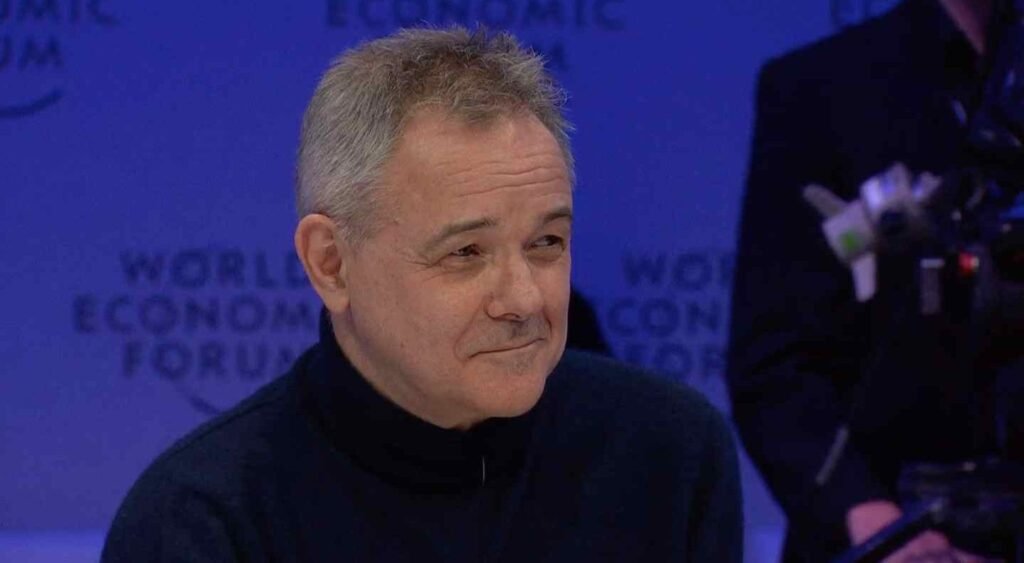
The Wellcome Trust stated, referring to this initiative, that “There is a clear need for the public and private sectors to share the data they gather from local and global antibiotic surveillance studies.” In a 2016 press release, the Wellcome Trust issued a press release advocating for “research data gathered during…future public health emergencies, to be made available as rapidly and openly as possible.”
Similarly, in a 2017 statement Bill Gates stressed the importance of biosurveillance data sharing: “We also have to ensure that every country is conducting routine surveillance to gather and verify disease outbreak intelligence…we must ensure that countries share information in a timely way, and that there are adequate laboratory resources to identify and monitor suspect pathogens.”
This kind of biosurveillance is not something novel or technologically distant. The Palantir and Department of Health and Human Services (HHS) program “Protect” surveilled wastewater treatment plants across the United States “to predict new COVID-19 cases five to eleven days before an outbreak” as part of a mass data collection plan during the pandemic. The program was actually a resurrection of a post-9/11 surveillance program that had been housed at the Pentagon’s DARPA, but was quickly scrapped due to privacy concerns. Under Protect, the Trump administration forced US hospitals to enter “all data on Covid-19 cases and patient information directly into HHS Protect” by threatening Medicare and Medicaid funding for any hospitals who did not comply. Palantir, which obtained all of HHS’ COVID data, was created with significant CIA involvement in order to obtain predictive intelligence from mass civilian surveillance to stop threats – from terror attacks to public health emergencies – before they happen.

Predicting outbreaks through biosurveillance is crucial to fueling the research and development (R&D) phase of pandemic preparedness and response — and a critical opportunity for biotech products to be developed and administered outside the typical regulatory system. It also allows them to be developed and marketed preemptively, meaning that – in the wrong hands – products could be sped through development and forced on the public without any material public health threat at all. Merely the possibility of a threat could potentially trigger the same style of response observed during COVID-19 or, worse still, the intentional release of the very pathogens targeted by “preemptive” drug/vaccine development could be incentivized.
II. Research and Development
While the recently passed IHR amendments do not mandate that state parties collaborate on “research and development cooperation [and] technological and information sharing,” as previous drafts did, the WHO Director-General is now officially required to “support States Parties, upon their request,…to promote research and development and strengthen local production of quality, safe and effective relevant health products, and facilitate other measures relevant for the full implementation of this provision” (emphasis added).
In the latest draft of the WHO CA+, member states are required to “cooperate to build, strengthen and sustain geographically diverse capacities and institutions for research and development,…based on a shared agenda” and “promote research collaboration and access to research through open science approaches for the rapid sharing of information and results, especially during pandemics.”
This would expand the WHO’s 2014 CEPI-partnered program, Research and Development Blueprint for Emerging Pathogens (R&D Blueprint) that aims to “reduce the time between the declaration of a [pandemic] and the availability of effective tests, vaccines and medicines.”
However, the Blueprint does this not only through R&D as a means of pandemic response, but also pandemic prevention through conducting R&D on diseases that “are likely to cause epidemics in the future.” The R&D Blueprint is therefore an extension of the WHO’s biosurveillance measures, as it will commission research and development of medical products for pathogens that are detected through “One Health” style surveillance.
This kind of preventive R&D has caused experts on the WHO CA+ and IHR to raise serious concerns about its potential to incentivize gain-of-function (GoF) research. Since GoF research is considered dual-use, which means it can be used for both preventive pandemic measures and as offensive biological weapons, it is possible the allegedly defensive/peaceful R&D the WHO is advocating for could also be used to develop biological weapons.
The WHO is clearly aware of this risk. In a WHO BioHub safety document, for example, it recommends that labs affiliated with the WHO’s data-sharing pathogen program develop a biosecurity plan that “include[s] the measures to be implemented to prevent the theft, misuse and intentional release of hazardous biological agents.” The latest draft of the WHO CA+ also states that member states must implement “laboratory biological risk management in order to prevent the accidental exposure to, the misuse of or the inadvertent release of pathogens.”
Whether or not these leaks are accidental or intentional, the highly-likely origin of COVID-19 being a lab leak speaks to the ability for these pathogens to cause severe global disruption. This raises concerns about whether or not conducting more preventive R&D on dangerous pathogens is actually being done for the purpose of “preparedness,” especially considering that preemptive R&D will presumably play a crucial role in getting Big Pharma-owned pandemic drugs to market.
Further, considering CEPI founder and former Wellcome Trust director Jeremy Farrar’s position as Chief Scientist of the WHO, and the leading role that CEPI played in funding R&D for the COVID-19 vaccines as well as the role they continue to play in funding vaccines for future coronaviruses and against the allegedly forthcoming “Disease X,” (plus their unique funding model which pools from “several investors,” which have included the Gates Foundation, the Wellcome Trust and The World Bank) it is highly likely that the R&D on these future pathogens with pandemic potential will be carried out by CEPI and other WHO public-private partnerships with financial conflicts of interest.
The Wellcome Trust and the Gates Foundation also provided significant funds to start CEPI, which launched in 2017 with the goal of “shorten[ing] the time it takes to develop new vaccines to protect against viruses that emerge suddenly as public health threats…” Key to shortening the development time of vaccines is the process of deregulation, which permits the rapid development and distribution of unapproved medical products—also a vital component of the new IHR and the WHO CA+.
III. Regulatory Pathways
The new IHR provides sufficient regulatory opportunities for unapproved medical products to make their way to market in the face of a pandemic — a perfect deus ex machina for the risky biotech products that make up Big Pharma’s new acquisitions. Under the new international convention, the Director-General is required to provide, when requested by member states, documents “related to a specific relevant health product” which would be “provided to WHO by the [drug] manufacturer…for the purpose of facilitating regulatory evaluation and authorization by the State Party” (emphasis added).
While the exact implications of this provision are unclear, international law professor Dr. Amrei Müller, co-founder of the Global Health Responsibility Agency and expert on the WHO CA+ and IHR, told Unlimited Hangout that she suspects this “provision once more aims at speeding up emergency authorisations at the domestic level during a pandemic of WHO-recommended ‘relevant health products’ that are investigational,” noting that the WHO does not specify whether or not these “relevant health products” must be fully licensed.
Similarly, the WHO Director-General is now required to “support State Parties, upon request, in scaling up and geographically diversifying the production of relevant health products…” The documents do not prohibit the WHO from influencing domestic regulatory laws in order to “[scale] up” the production of health products.
The WHO CA+ more forcefully seeks to influence domestic regulation policy to this end. It calls on member states to “take steps to ensure that [they have] the legal, administrative and financial frameworks in place to support emergency regulatory authorizations for the effective and timely approval of pandemic-related health products during a pandemic,” (emphasis added) including through “technical assistance and cooperation with WHO” — an attempt to mandate that member states implement emergency use authorization policies at the domestic level to carry out the rapid response agenda of the WHO’s public-private-partners.
These provisions expand on the goals of the WHO’s public-private program, the Access to COVID-19 Tools (ACT) Accelerator, “to accelerate development, production, and equitable access to COVID-19 tests, treatments, and vaccines” to diseases beyond COVID-19.
The ACT Accelerator, of which COVAX is part, acted as a partnership that included the WHO, Gates Foundation, GAVI, Wellcome Trust and the World Bank — all substantial funders of the WHO and partners of the Gates foundation (including the World Bank and Wellcome Trust). Notably, the World Bank and the Gates Foundation funded a 2017 World Organization for Animal Health program to develop “vaccine banks” which sought to “[enable] the rapid supply of emergency stocks of vaccines…in order to vaccinate targeted animal populations at risk.”

A 2018 World Bank policy document, which the Gates Foundation contributed to, describes its “Pandemic Emergency Fund” which also involved a “CEPI trust fund” in which The World Bank funded CEPI to develop vaccines in order to “[accelerate] vaccine development against pathogens with pandemic potential…” Part of this “acceleration” involved helping “improve regulatory capacity in low-income countries and prepare countries and sites to conduct clinical trials…” in order to ensure that low-income countries “rapidly and effectively have access to life-saving vaccines” (emphasis added). The act of “improving regulatory capacity” likely refers to altering the regulatory laws of countries that don’t have in place emergency deregulatory programs, such as the US’s emergency use authorization or the FDA’s Investigational New Drugs Application, which allows drug companies to apply for FDA approval to administer unapproved biotech products to humans.
Yet, the funders of the WHO are also seeking other, more “innovative,” methods to push for accelerated drug development. When Jeremy Farrar was still the director of the Wellcome Trust, he launched an initiative led by two former Defense Advanced Research Projects Agency (DARPA) directors called Wellcome Leap. Wellcome Leap, a de facto global iteration of DARPA, aims to employ synthetically created human organs for testing the effects of pharmaceutical products. If successful, this testing method could replace animal — or perhaps even human — drug trials using “gene-edited or farmed organs,” further reducing the time it would take to bring drugs to market.
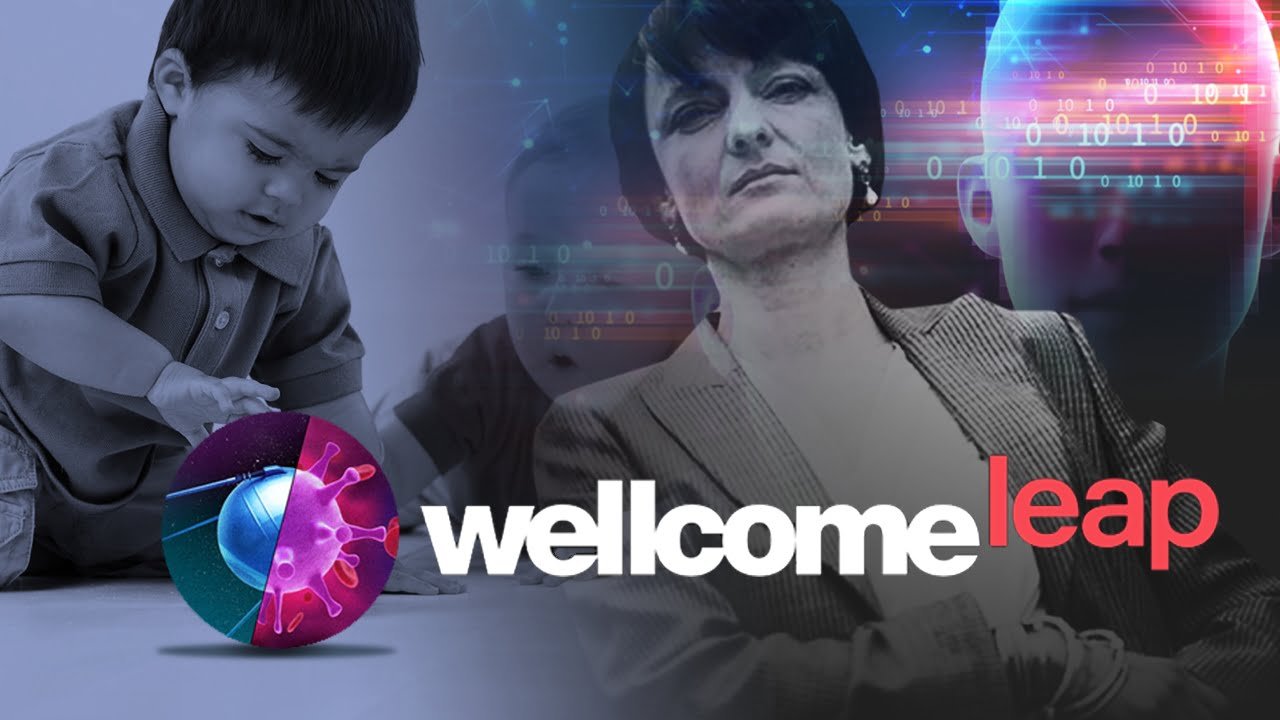
It seems even the WHO Review Committee tasked with critiquing the amendments, however, believes the regulatory ambitions of the WHO may go too far considering the organization’s powers. It noted that it “may be inadvisable from a legal perspective to require that the WHO develops such [domestic] regulatory guidelines [for member states].” Obviously, these recommendations did not dissuade the WHO from implementing deregulation opportunities for member states in the new IHR, nor from the WHO CA+.
The WHO’s EUL of the COVID-19 vaccine, which caused severe side effects, demonstrated the consequences of rushing a drug to market under the guise of an emergency. It also, however, proved that providing a regulatory option for unapproved biologic drugs that allowed developers to skip normal testing procedures could be massively profitable. In the midst of chaos and fear, the standards of most people could be brushed aside in the name of safety—a phenomenon perhaps most effectively demonstrated through vaccine mandates.
IV. Mandating Unapproved Medical Products
In July 2023, the World Health Organization (WHO) adopted the EU digital COVID-19 passport system “to establish a global system that [would] help protect citizens across the world from on-going and future health threats, including pandemics.”
Also known as an “immunity pass,” the EU digital COVID-19 vaccine passport dictated one’s ability to travel based on three criteria: their vaccination record, negative test results and records of previous infections. While digitized vaccine passports were not required, all contained “‘a digitally signed QR code’ which [would] be scanned on entry to a country.” Before the WHO adopted the system, 51 countries utilized the EU system to dictate who could enter their borders — and presumably influence many people to be vaccinated — from July 2021 to June 2023.
While a digital vaccine passport does not function as a hard mandate in which every citizen of a given population is forced to take a vaccine, it acts as a conditional mandate — one which offers the illusion of choice, but – in reality – restricts the civil liberties of those who do not comply.
For example, many countries such as Austria implemented “soft” mandate tactics such as barring the unvaccinated from eating at restaurants, cafes and going to hairdressers. The US enforced similar tactics, leaving it mostly up to the private sector and certain government bodies to enforce vaccine mandates, which caused thousands of Americans to lose their jobs for refusing to get the vaccine (also see here). The Biden administration also made staff vaccination for Medicare and Medicaid hospitals mandatory by threatening their federal funding, which caused at least hundreds of healthcare workers to be fired or suspended from their jobs. Requiring proof of vaccination as a prerequisite for otherwise standard rights — such as having a job, eating at a restaurant or traveling — coerces people that otherwise would not take the drug into doing so, and punishes those who express their free will.
As Dr. Fauci said in a book interview, “it’s been proven that when you make it difficult for people in their lives, they lose their ideological bullshit, and they get vaccinated.”
The coercion permitted by the travel-based mandate was actually already established in the 2005 IHR, which allows member states to require “proof of vaccination or other prophylaxis” for entry into a country “when necessary to determine whether a public health risk exists; as a condition of entry for any travelers seeking temporary or permanent residence,” or to “achieve the same or greater level of health protection than WHO recommendations,” essentially permitting member states to do anything in the name of reducing the spread of disease.
The new IHR expands on this by articulating the details of the technology that will presumably be used to check medical records during future pandemics. Specifically, it states that “health documents” can be “issued in non-digital or digital format, subject to the obligations of any State Party” (emphasis added). The IHR now also requires the WHO to “develop and update [with member states]…technical guidance, including specifications or standards related to the issuance and ascertainment of authenticity of health documents, both in digital format and non-digital format.”
The WHO’s Chief Scientist, Jeremy Farrar, will presumably have major influence on drafting these “standards” related to vaccine passports. In addition, his company CEPI is a central researcher and developer of vaccine technology against “Disease X,” increasing the likelihood that WHO private stakeholders will influence the decision making around this process.

The WHO Global Digital Health Certification Network (GDHCN), which is currently being developed, is a good indication of how these health checks will take place. The GDHCN expands the “regional networks” that the EU Digital COVID-19 Certificate system used, presumably on a “global” scale. The GDHCN aims to digitize vaccination certificates “within and across borders” and act as a digital information hub for the storing of traveling citizens’ relevant medical records. In other words, it will track “digitally signed health credentials (e.g. Immunization cards, health records),” or which Big Pharma-developed medicines/vaccines that citizens of the world have taken, in order for member states to use that data to dictate the human rights of travelers.
The WHO boasts on its website of the system’s “interoperability” — meaning its capacity to work with other “existing regional networks” that have already been established to verify health credentials. Interoperability, perhaps the most significant attribute of the GDHCN, is a necessary component of the “One Health” approach to pandemic preparedness.
It makes possible the WHO CA+ treaty goal of “multisectoral collaboration at national, regional and international levels to safeguard human health…” and the mandate for member states to “develop, strengthen [and] implement…comprehensive multisectoral national pandemic prevention” through “collaborative surveillance,” (emphasis added) by providing a digital infrastructure for mass data sharing. With this level of collaboration, governments can access all citizens’ relevant health records at the press of a button and potentially share it with their private sector partners.
While interoperability is often sold as a way to make a global system of surveillance and identification “decentralized” through outsourcing these tasks to multiple organizations, interoperability also allows data from different governments and vendors to all be centralized and accessible in the same global database. In other words, interoperability allows for de facto centralization despite many separate vendors, providing merely an illusion of decentralization.
Conveniently, the GDHCN is being developed at the same time that the UN is seeking to impose digital identification as a “human right,” or rather as a condition for accessing other human rights, for the entire global citizenry by 2030, as established in its Sustainable Development Goal 16.9. The UN’s digital ID goals are being carried out through global public-private partnerships, mainly the ID 2020 Alliance (now part of the Digital Impact Alliance). The ID2020 Alliance Manifesto states that “Individuals need a trusted, verifiable way to prove who they are, both in the physical world and online.” One of the ways it seeks to do this is by “providing a route to technical interoperability.”
This “alliance” is also interestingly backed by Bill Gates’s Gavi — which raises a question of how much digital identification, and thus digital health passports, are part of the promotion of “healthy” vaccine markets. Other backers of ID2020 include Microsoft and the Rockefeller Foundation, which is also a significant funder of the WHO.
Verification systems of this size will place the right of citizens to do basic activities — like traveling, eating at a restaurant or working their job — in the hands of governments and potentially employers. The rights of civilians will be conditional, dictated by data stored in a massive digital hub that is global in its sharing abilities. Not only will domestic governments have access to the health information of their own citizens under this system, but an entire global bureaucracy will as well.
Corporate Greed: A Real Pandemic
The patent cliff Big Pharma faces is a steep one, and the safety barriers that previously kept companies from descending too far from the top have dwindled away as a result of the corporate giants’ gluttonous consumption of their competition and industry consolidation over the decades.
With very few traditional drug companies left to merge with or acquire, the shift towards biotechnology/biologics — an “unpredictable” type of drug technology designed to target specific parts of the human anatomy — has begun. The seemingly impossible replication of these drugs, their expensive development and tricky regulatory hurdles in getting their “biosimilar” versions to market have convinced drug companies that biotech can protect them from the cavernous patent cliff they must confront. The dangers surrounding these drugs, however, create hurdles typical drugs do not as often have to face in getting to market and earning consumer trust.
With the WHO now having passed its revised IHR, and continuing its drafting of the WHO CA+, these policies are carving out an increasingly likely path for biotech drugs, whether they are approved through traditional regulatory processes or not. The One Health model of pandemic preparedness creates an entire pandemic market dedicated to the production of experimental drugs, brought about through constant biosurveillance of entire populations and R&D on pathogens with pandemic potential. Previously, tech companies such as Palantir have performed this biosurveillance, with companies like Google and Oracle taking part in the larger biosurveillance apparatus. R&D on dangerous pathogens has been conducted by Gates-funded NGOs like CEPI—who provided crucial work on the massively profitable COVID-19 vaccines.
Both the WHO CA+ and the IHR have further normalized and expanded what was already made the “new normal” standard during the COVID-19 pandemic; specifically, conducting mass biosurveillance to predict and prepare for pandemic outbreaks, implementing emergency deregulation for experimental drugs to be distributed in mass while telling people they are “safe and effective” and conditional mandates that determine one’s human rights based on their vaccination status.
The codification of the right of nations to demand digital verification and disclosure of people’s health records during a pandemic, as well as pressure to supply mass access of that data through interoperability, permits countries to de facto take any measure to “slow the spread” of a virus irrespective of how egregiously it might violate human rights. The implementation of the GDHCN would make one’s right to bodily autonomy dependent on their willingness to sacrifice their rights to travel, and if the technology is repurposed domestically, perhaps other rights will be removed as well.
The WHO purports that its goal is to “promote health, keep the world safe and serve the vulnerable” — but can it truly do that when implementing international laws that definitively serve giant corporate interests and diminish the human rights of the general public? The financial corruption infecting the organization has made it subject to the influence of its private stakeholders, who create policy that enriches Big Pharma.
As the line blurs between the so-called public and private sector, the greed that drives Big Pharma has reached completely irrational heights. The coming biotech pandemic market, the new heart of our “public health” system, functions on fear, embodied by the creation of a global biosurveillance system allegedly meant to prevent ever-increasing pandemics, and manipulation, disseminated through mandates and information control. Ironically, while this system is being touted as a form of pandemic prevention, it potentially incentivizes gain-of-function research which enables the militaristic weaponization of natural diseases. Justifying speed over rigor and authority over freedom seem to be necessary prerequisites for business success in what is becoming the biotech pandemic market. Ironically, Big Pharma reached this point of near-demise as a result of its own desire for wealth and expansion, and its insistence that medical products must generate profits over positive health outcomes. This cultural mindset has led the world here, in a final faceoff between the globalized corporate capture of all “public health” institutions, and the truth — the most potent treatment for this corporate pandemic.
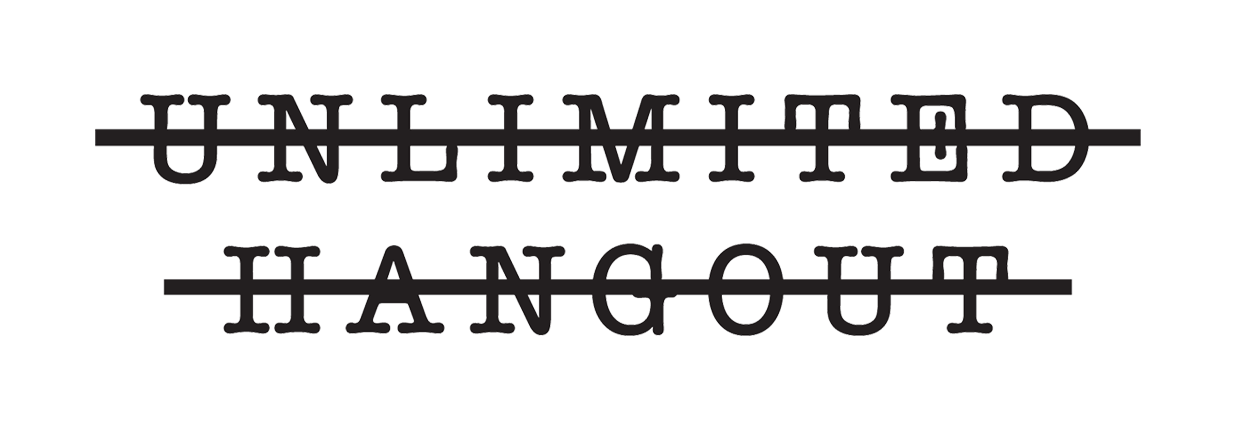
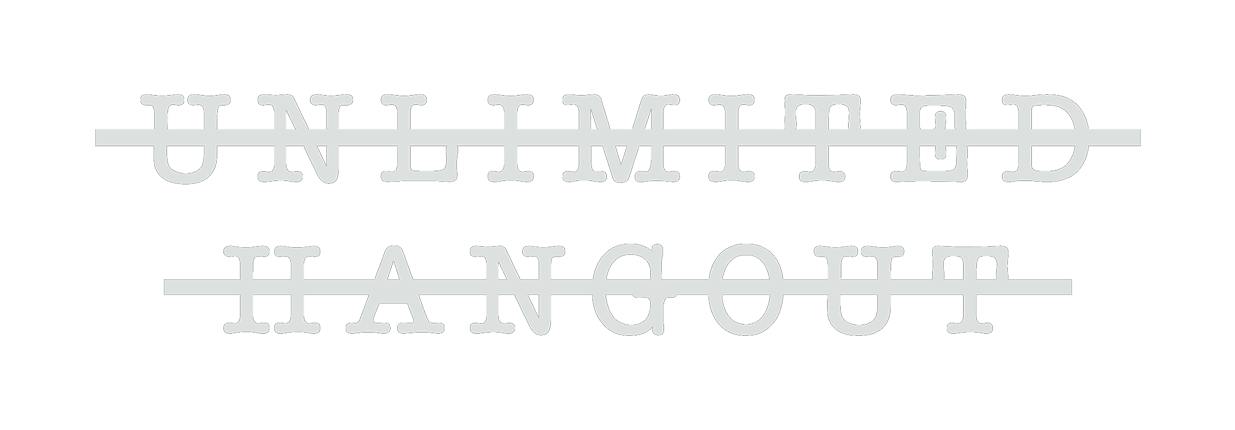

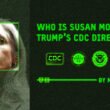
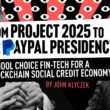






Love this piece. YThank you!
COVID is an acronym meaning Certificate of Vaccine I.D.
The 19 is the first and ninth letters of the alphabet+ A.I.
So “covid” is not a virus, it’s a shot of self-assembling graphene matrices that react with EMF ( 5G towers ) and serve as both a genocidal initiative and also a biosecurity track and trace. They want to know how many of us they’re killing, how long it takes, and where we are when we drop dead.
Excellent detail of the political and business reality but missing the biology fraud that is challenging to uncover with decades of fraud in virology and vaccinology sectors. What ALL the Gain of Function activity is actually used for is creating and testing vaccines. NONE of these RNA molecules have the fidelity to pandemic they can only create a local effect with vials or vats of clones that are a highly putrefied version of virus that can NEVER exist in Nature and will revert to Laws of Nature with low replication fidelity if or when the clones are deployed in a human population.
Take a quick scan of 2016 Gryphon Scientific 1,000+ page GoF Risk & Benefit Report
Search for “however” or “pre-pandemic vaccine” to see models used to predict vaccine candidates based on how petrie dish transfection of cell cultures & animals with their synthetic clones reacts to what Gryphon consistently notes may NOT reflect human immune system reaction. It’s all a vaccine pimping operation with ZERO real world or human immune system input. Assumptions about unknowns are waved away & real world effects moot.
https://web.archive.org/web/20161206155142/http://www.gryphonscientific.com/wp-content/uploads/2016/04/Risk-and-Benefit-Analysis-of-Gain-of-Function-Research-Final-Report.pdf
Superb report on Pharma financial cliff. Gangsters one and all.
Excellent article. Will share. Thank you for the research and detail.
Excellent expose of the Big Pharma and WHO motivations and corruption, the IHR and One Health terror. Sharing.
I worked for GSK in marketing IT for 10 years. Patent expiration and the drug pipeline are the two biggest issues the drug makers face. You’ve laid out in this article very clearly how the WHO is implementing a coup of the world’s health authorities with a pipeline of plandemics to ensure maximum profit with zero risk or ability to voice complaints. This playbook is a wet dream for the likes of Bill Gates and others with total monopoly mentality. As citizens of the world, this is the most important issue of our time. We must dethrone these demons, our lives and freedom depend on it. Never Trust them!
“Pandemics” especially fictitious ones like COVID are nothing more than manufactured events for power and profit. Viruses have to date never been proven to exist.
https://drsambailey.com/why-nobody-had-caught-or-got-covid-19/
https://drsambailey.com/a-farewell-to-virology-expert-edition/
Covid is NOT ‘fictious’…it IS maiming and killing to this day…while the world burns.
H5N1 comin’ up fast.